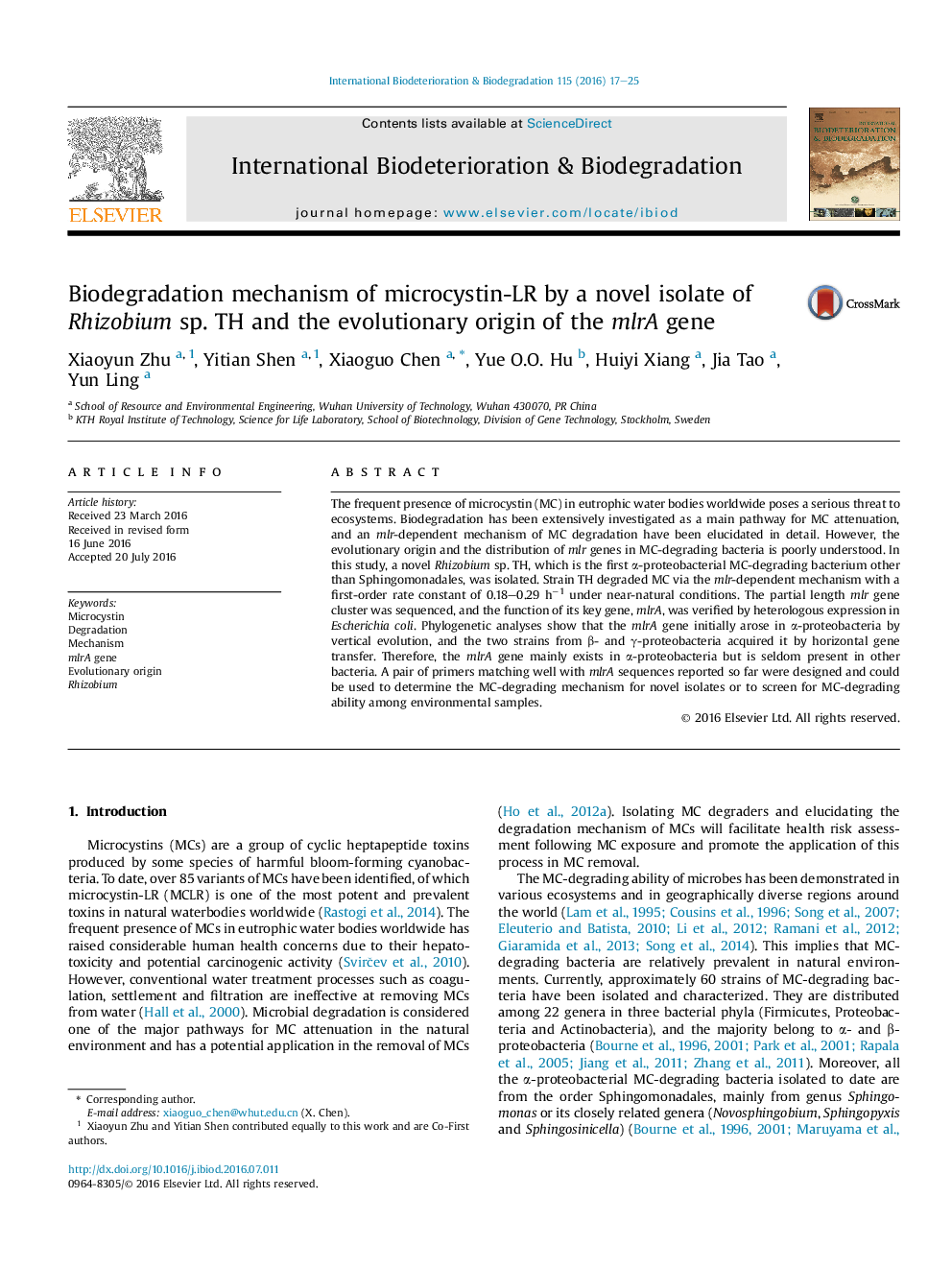| Article ID | Journal | Published Year | Pages | File Type |
|---|---|---|---|---|
| 4364155 | International Biodeterioration & Biodegradation | 2016 | 9 Pages |
•A Rhizobium sp. TH capable of degrading MCLR was isolated for the first time.•The isolate degrades MCLR via an mlr-dependent mechanism.•mlrA arose in α-proteobacteria and was transferred to two β- and γ-proteobacteria.•mlrA exists mainly in α-proteobacteria and is seldom present in other bacteria.•A pair of primers was designed to target the mlrA gene.
The frequent presence of microcystin (MC) in eutrophic water bodies worldwide poses a serious threat to ecosystems. Biodegradation has been extensively investigated as a main pathway for MC attenuation, and an mlr-dependent mechanism of MC degradation have been elucidated in detail. However, the evolutionary origin and the distribution of mlr genes in MC-degrading bacteria is poorly understood. In this study, a novel Rhizobium sp. TH, which is the first α-proteobacterial MC-degrading bacterium other than Sphingomonadales, was isolated. Strain TH degraded MC via the mlr-dependent mechanism with a first-order rate constant of 0.18–0.29 h−1 under near-natural conditions. The partial length mlr gene cluster was sequenced, and the function of its key gene, mlrA, was verified by heterologous expression in Escherichiacoli. Phylogenetic analyses show that the mlrA gene initially arose in α-proteobacteria by vertical evolution, and the two strains from β- and γ-proteobacteria acquired it by horizontal gene transfer. Therefore, the mlrA gene mainly exists in α-proteobacteria but is seldom present in other bacteria. A pair of primers matching well with mlrA sequences reported so far were designed and could be used to determine the MC-degrading mechanism for novel isolates or to screen for MC-degrading ability among environmental samples.
